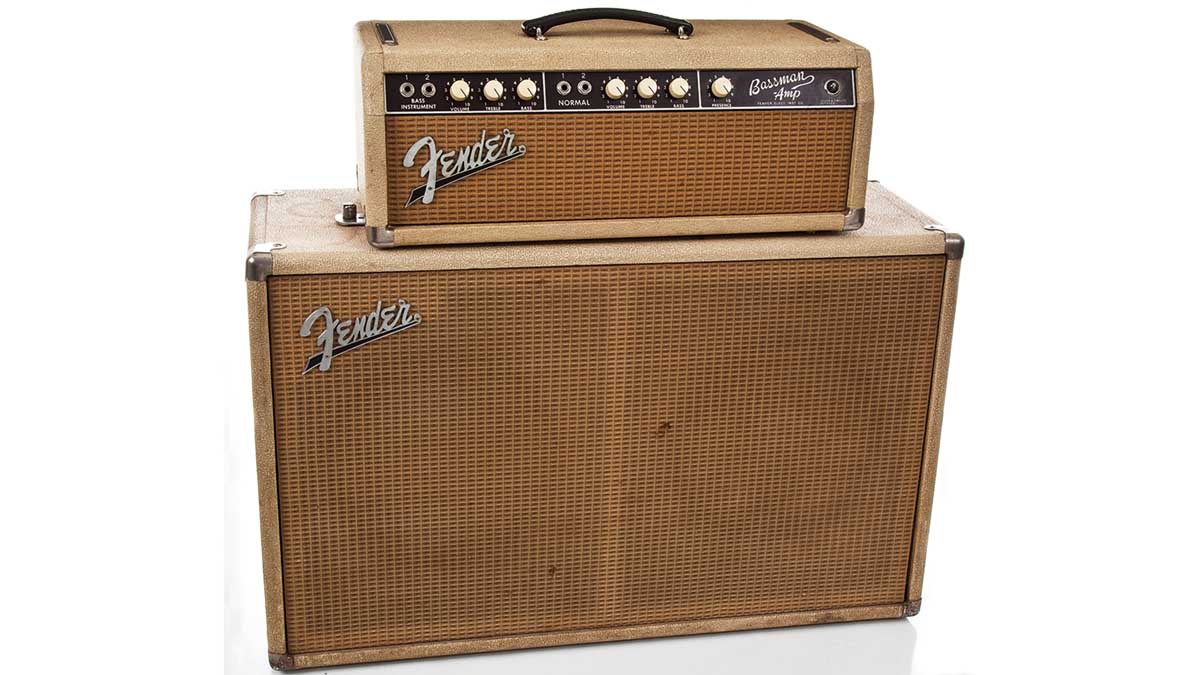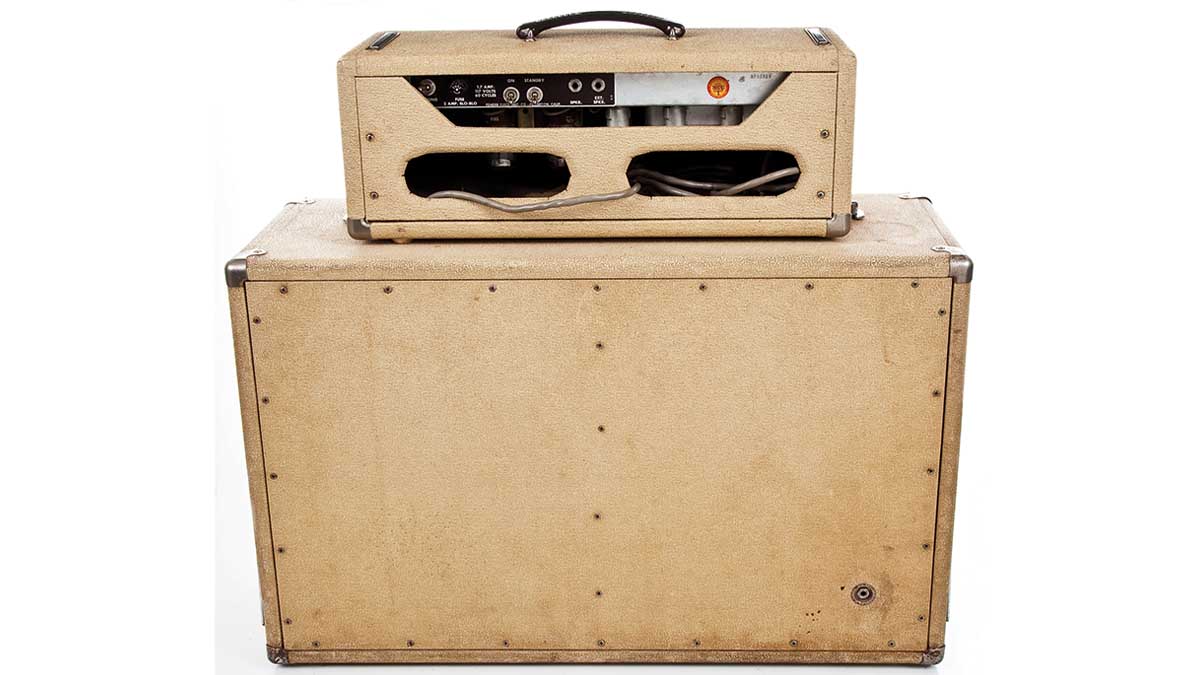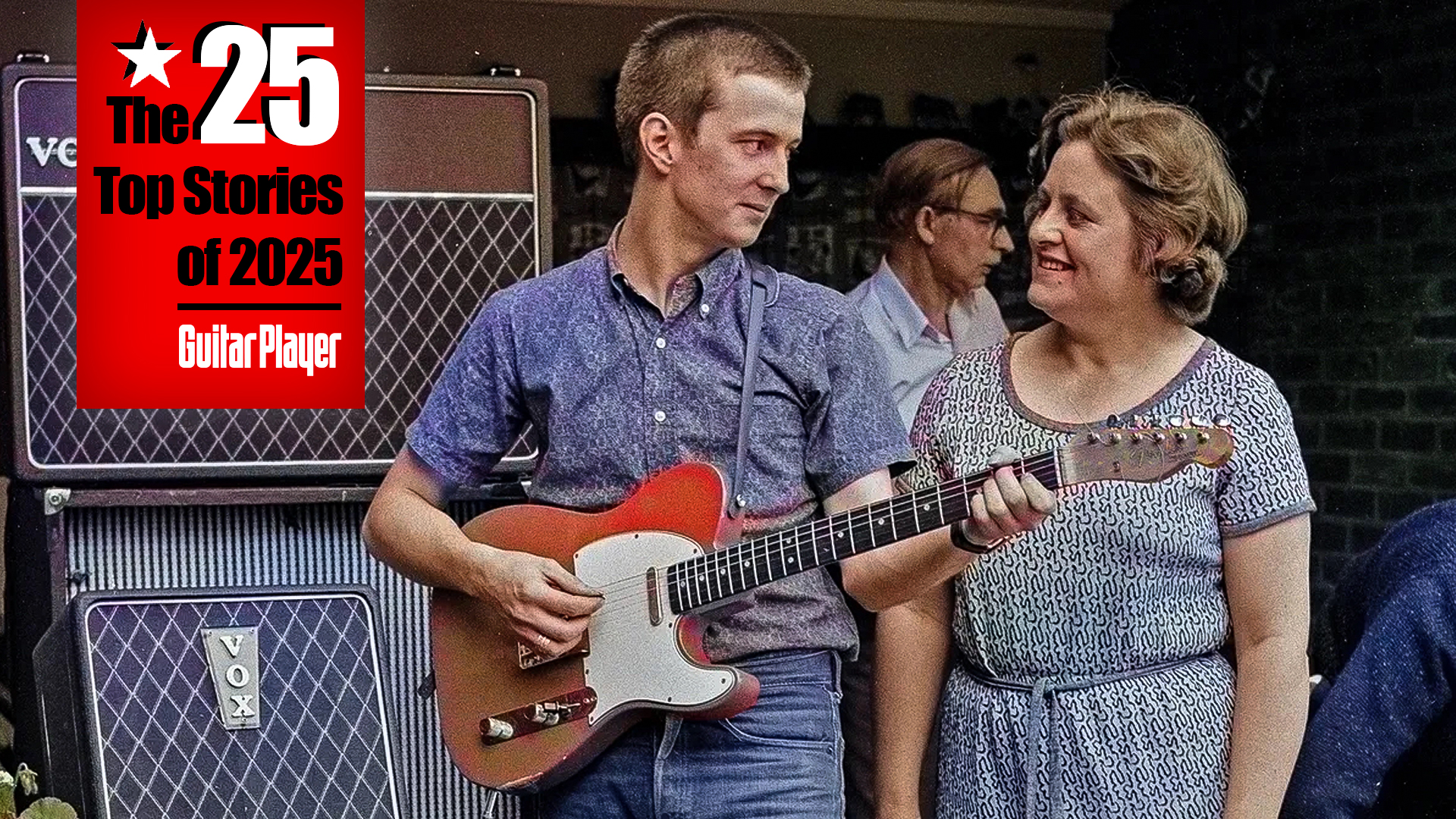Classic Gear: Fender Bassman
Designed for bassists, the Fender Bassman became the favored tone machine of guitarists everywhere.

You know a design is special when it attains “classic” status not just in its most iconic iteration but in several revamped versions.
Such is the Fender Bassman. First introduced in 1952 as a 1x15 combo, the tweed Bassman hit its stride in the late ’50s as the narrow-panel 4x10 5F6A combo, which achieved major crossover success with six-stringers and became known as one of the greatest guitar amps of all time.
By 1961, however, the Bassman had evolved beyond all recognition into an amplifier that was very different both inside and out. It was bigger, bolder, and more accurately bass-intended. And it proved yet again to be another classic design for electric guitar.
At the turn of that decade, Fender’s tweed combos evolved into two new lineups, both very different from anything that had come before and boldly signaling the way forward for modern guitar-amp production.
• 50 watts from two 5881/6L6GC output tubes
• Four 7025 (12AX7) preamp tubes
• Bass and Normal channels with volume, treble, and bass; shared presence
• Piggyback head atop closed-back extension cabinet
• Two 12” Jensen or Oxford speakers
• Blonde Tolex covering with wheat grille cloth
Aside from the top-mounted Champ, all models had forward-facing control panels enameled with a dark-brown background. The combos were covered in light-brown Tolex, at the time a new, durable vinyl product (the Vibrasonic and Concert in this range actually debuted in 1959), while the head-and-cab models received flashier blonde Tolex cosmetics.
The latter comprised what Fender called its Professional Series, a range of “piggyback” sets that helped establish the standard for bigger amps intended for larger venues. It included the powerful Showman, Dual Showman, Bandmaster, Tremolux, and Bassman models.
The 1962 Bassman, shown here, is the 6G6B, the third of three rapid iterations of the model following its introduction as the 6G6 a year earlier, and it’s nearly as different inside from its predecessor, the tweed 5F6A Bassman, as it clearly appears outside.
All the latest guitar news, interviews, lessons, reviews, deals and more, direct to your inbox!
Some people like to call the brownface Fenders of the early ’60s a cross between tweed and blackface amps, but as we’ll see, they’re really a lot closer to the latter. Chief among this Bassman’s evolved characteristics is the new preamp design that all of them carry. It points to the one that Leo and company were moving toward and has relatively few traces of the tweed topology from just a year or two before.

Part of the key to “the tweed sound,” for the bigger amps at least, was a signal chain that hit the volume control right after the first gain stage (which comprised half of a preamp tube), followed by a full tube configured as a gain stage and cathode follower, which drove a tone stack placed after it.
The setup in these brownface amps, and those with black control panels that followed, is almost the reverse of that. The signal hits the tone controls after the first gain stage, then passes through the volume control before entering another half-a-preamp tube used as a gain-makeup stage to bolster signal levels depleted on the journey through all the circuitry thus far. More important than how it’s all done, though, is the tonal shift that results from the circuit change.
In place of the chewy, midrange-pronounced sonic signature of the tweed amps, the Fenders of the early and mid ’60s sounded tighter, glassier, and more mid-scooped.
They ushered in a whole new classic that was still entirely Fender. The new Bassmans also replaced the tweed Bassman’s tube rectifier with solid-state diodes, a change that helped firm up the low end and the amps’ overall punchiness and tightness.
It’s worth noting that this analysis (rectifier aside) applies primarily to the Bassman’s Normal channel. Its Bass channel was an entirely different beast and quite an oddball, representing an early effort to enhance the low-end.
Plug a six-string electric guitar into the Bassman’s Normal channel, though, and you’re tapping into a simple three-knob sensation that countless players have recognized as a toothsome and inspiring tone generator.
With all that said, the blonde 6G6B Bassman was still a little like its tweed predecessor in its use of a 12AX7/7025 preamp tube in the phase inverter and a presence control common to both channels, which provided a final means of adjusting the signal’s high-end content at the output stage.
The former drives the output tubes a little harder than the lower-gain 12AT7 that Fender switched to for the blackface amps of ’64, inducing a slightly earlier breakup and a little more grit even in so-called clean tones.
The latter provides a broader and smoother tweaking of the amp’s overall brightness, and feels very different from the all-or-nothing (and often brittle-sounding) bright switches Fender moved to as the brownface designs fell by the wayside.
There were several other changes between the 6G6B of late ’62 and ’63 and the AA864 Bassman circuit of ’64, but these two alone helped to make the blonde head a little more approachable and “just right” to some players’ ears.
And we haven’t even mentioned the tremendous change made by running all this tubular goodness into a closed-back extension cabinet with two 12-inch speakers rather than the tweed Bassman’s open-back combo cab with four 10-inch speakers, which is generally heard as a shift to more lower-midrange meat and low-end thump, a tighter upper midrange, and more directionality. Former Stray Cat and eternal rockabilly sensation Brian Setzer is likely the most famous proponent of the blonde Bassman.
Pete Townshend also gave a similar head a good workout with the Who before moving to Marshall and then Sound City/Hiwatt amps, and Michael Bloomfield frequently used one in the latter part of his career. The slightly changed-up black-panel/black-Tolex Bassman of ’64–’67 also became a go-to for several noteworthy players, Mike Ness of Social Distortion among them.
A used ’60s Bassman’s relative affordability on the used market in the ’70s, ’80s, and ’90s made the amps popular with lots of punk, grunge, and alt-rockers through those decades as well. All that, and a few bass players used them now and then, too.
Dave Hunter is a writer and consulting editor for Guitar Player magazine. His prolific output as author includes Fender 75 Years, The Guitar Amp Handbook, The British Amp Invasion, Ultimate Star Guitars, Guitar Effects Pedals, The Guitar Pickup Handbook, The Fender Telecaster and several other titles. Hunter is a former editor of The Guitar Magazine (UK), and a contributor to Vintage Guitar, Premier Guitar, The Connoisseur and other publications. A contributing essayist to the United States Library of Congress National Recording Preservation Board’s Permanent Archive, he lives in Kittery, ME, with his wife and their two children and fronts the bands A Different Engine and The Stereo Field.

